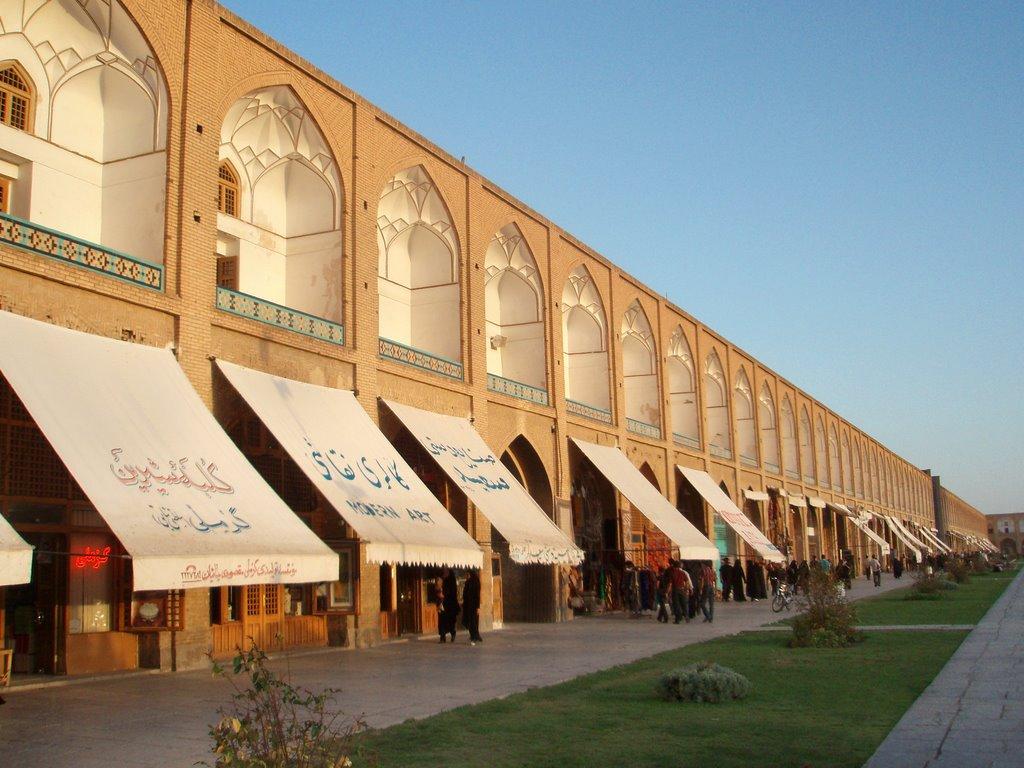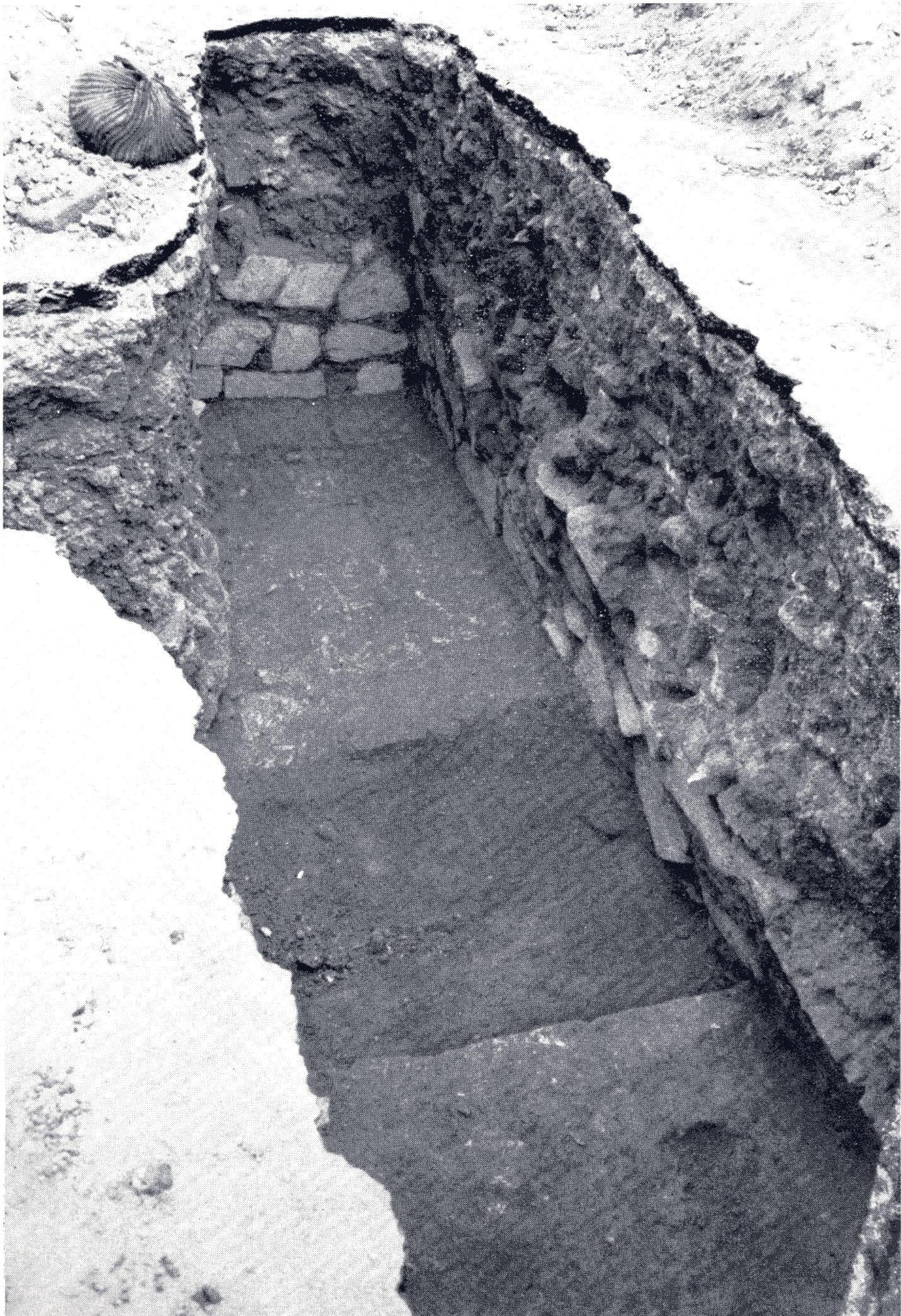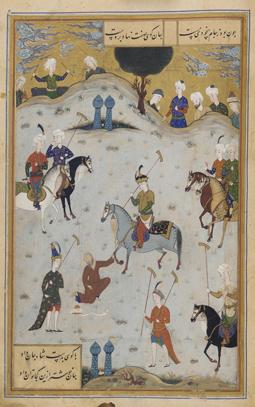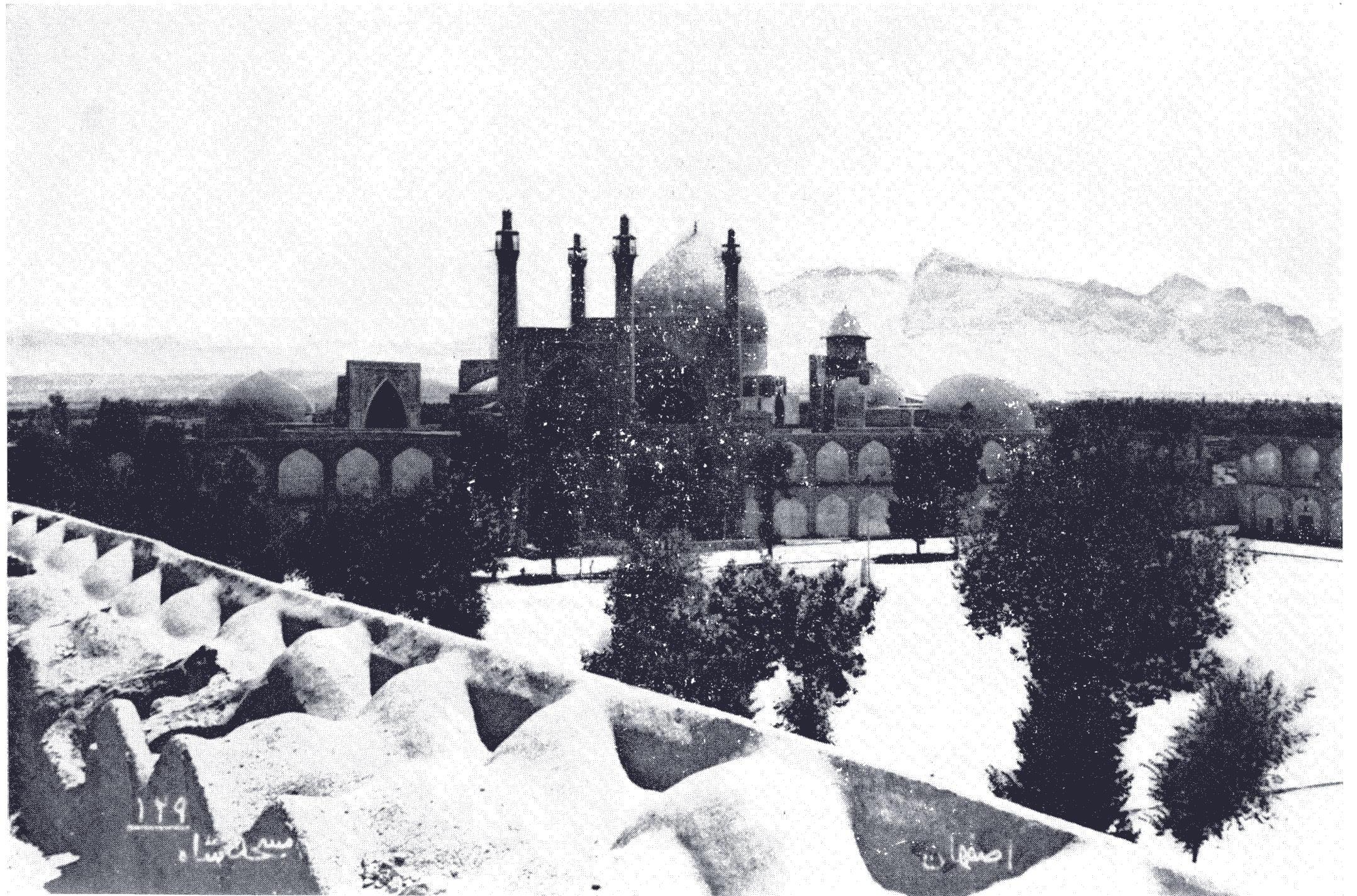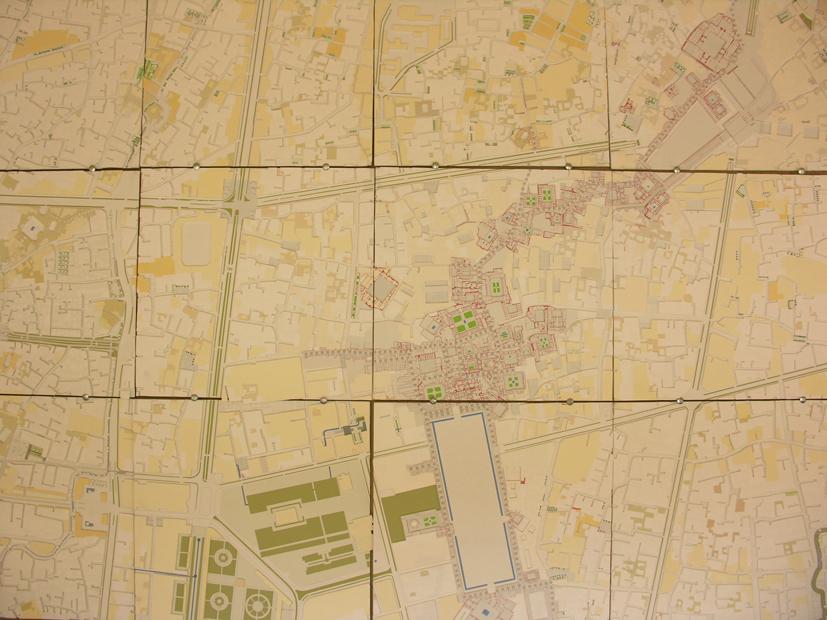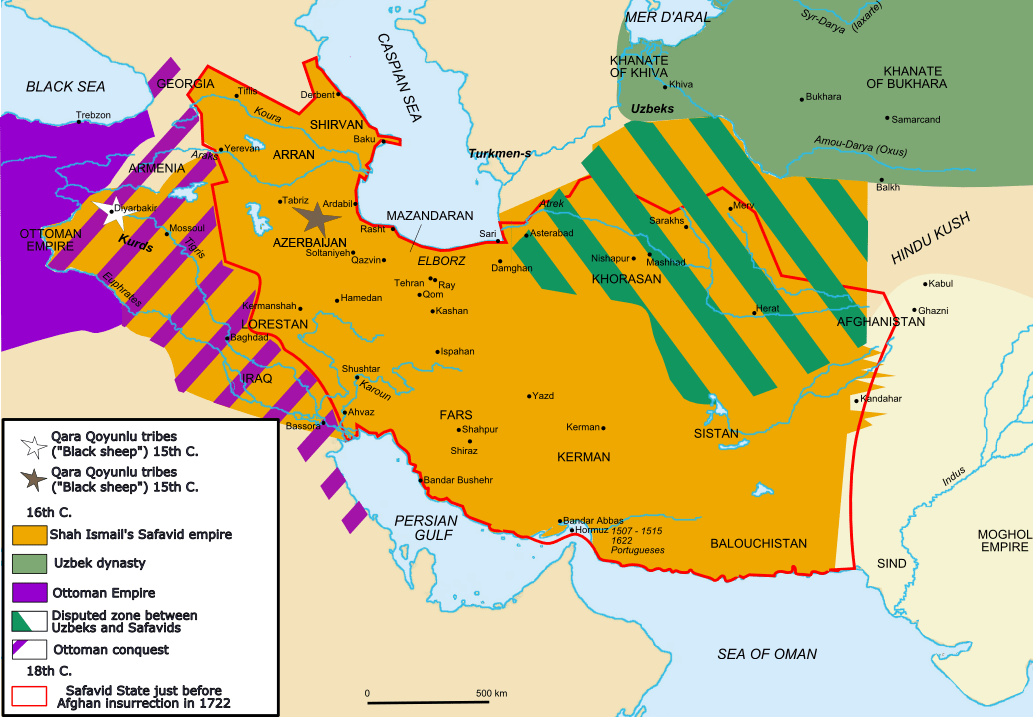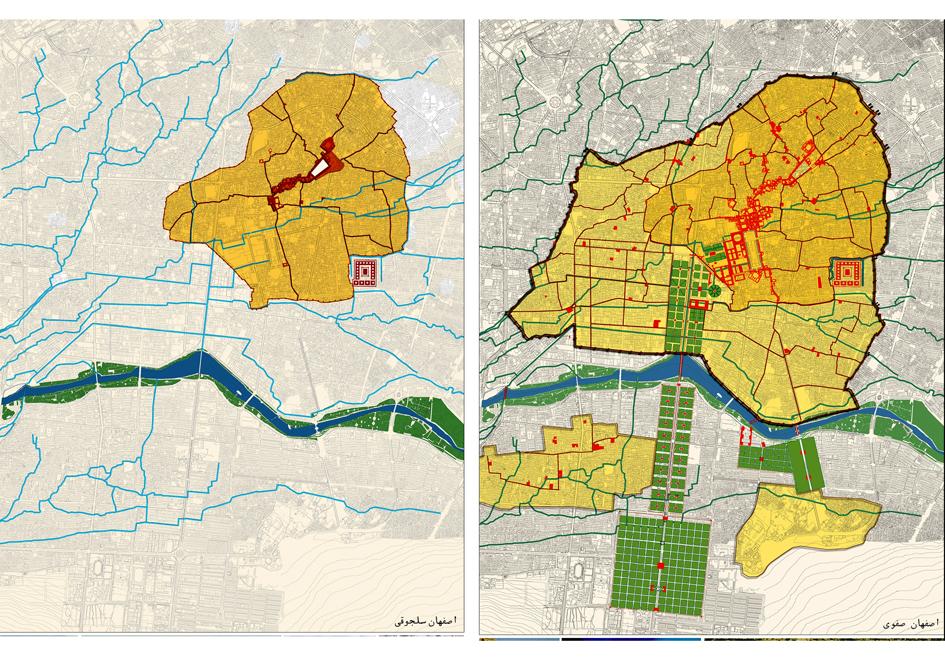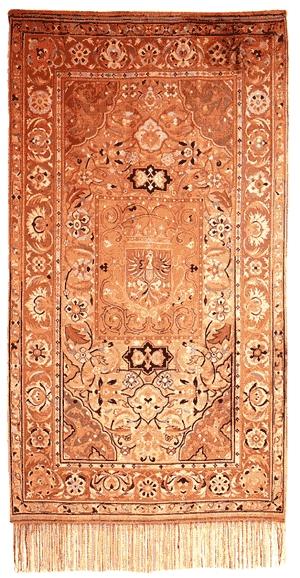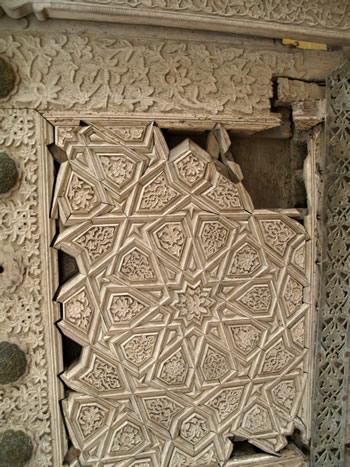Junabadi
Junabadi, although he wrote later[1], was clearly aware that the maydan was originally intended as a sportsground[2]: “the Isfahanis had laid out a spacious rectangular maydan measuring some 300 jaribs in area… Any observer casting his glance on it would be filled with delight. In the very center of the maydan was [erected] a sublimely …
